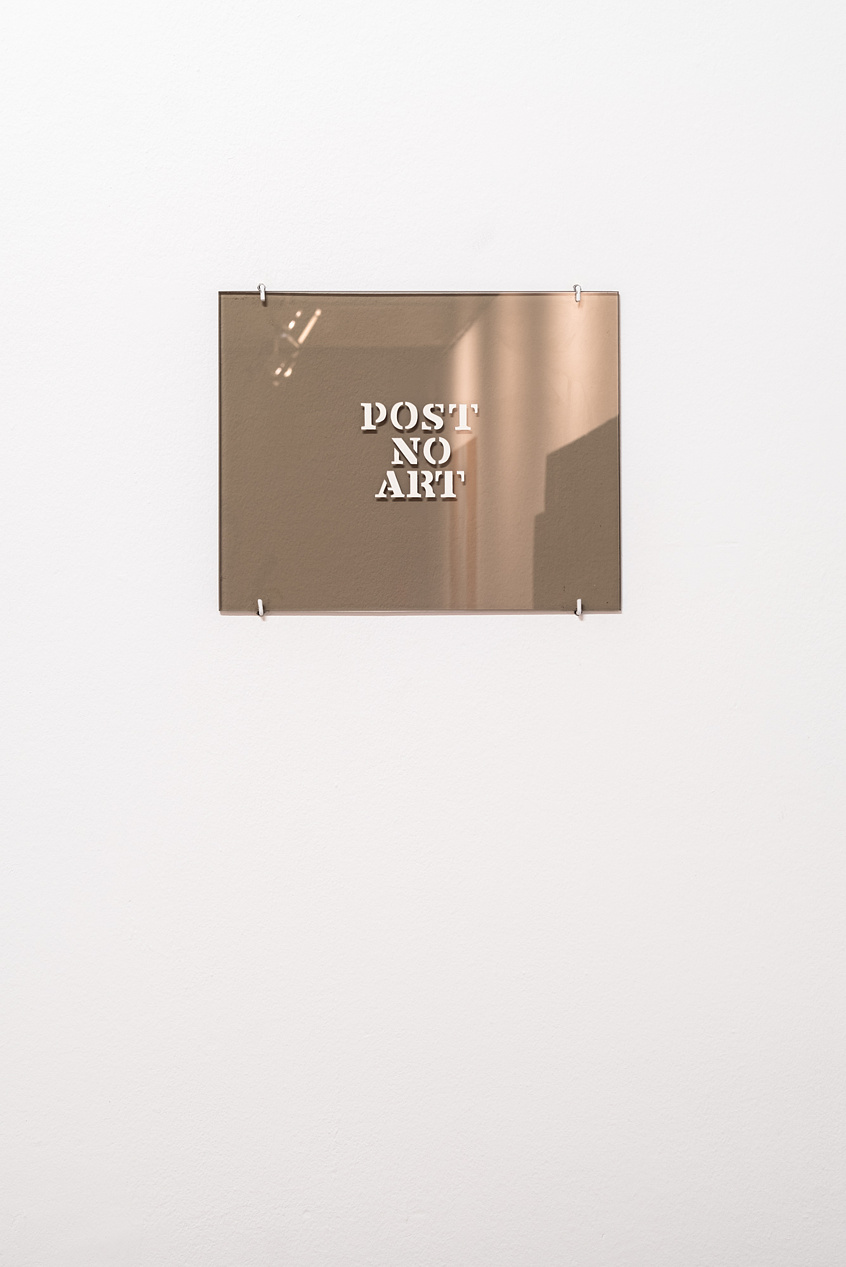In 1975, Christopher D’Arcangelo (1955–1979) undertook a series of unauthorized actions in New York’s major museums. The anarchist statement that accompanied them as well as all of D’Arcangelo’s subsequent interventions until his untimely death breached a long-standing taboo of anarchism as a legitimate political belief and doctrine, reiterated in anarchism’s popular re-emergence with the advent of punk. D’Arcangelo was not, however, an outsider in regard to contemporary art. Although he had not previously exhibited his work, he was, at the time, an assistant to the artists Stephen Antonakos and Daniel Buren, as well as at the recently opened John Weber Gallery, representing a roster of post-minimal and conceptual artists from both North America and Europe. D’Arcangelo’s work, which he diligently documented, is thus testimony to both his unique status as an artist, and the intense dialogue and debate within the art world in view of its increasing institutionalization in the mid- to late 1970s.
—Dean Inkster
Functional Constructions (with Peter Nadin), 1977–78
In September 1977, Christopher D’Arcangelo formed a close friendship and collaboration with the English artist Peter Nadin, who had arrived in New York upon completing fine arts studies at the University of Newcastle-Upon-Tyne the previous year. The two artists met when their day jobs coincided at PS1. The derelict public school building in Queens had reopened its doors a year prior as a center for experimental arts under the auspices of the Institute for Art and Urban Resources, Inc. The work D’Arcangelo and Nadin undertook entailed building an entire, white-walled exhibition space (a room within a room) in the former school’s auditorium for an upcoming exhibition by artists Bob Stanley and Bart Wasserman. This proved somewhat contrary to the spirit in which PS1 had emerged as an alternative art space. Indeed, its inaugural group exhibition, Rooms, had defied the standard decorum of museum display in offering its space to an impressive roster of artists, not as a neutral container, but rather—still in its derelict state—as found material to be integrated into each artist’s work. This may have, in part, inspired D’Arcangelo and Nadin to debate the value of their contractual labor. By the time they completed the job, what began as a lively exchange had evolved into a contract that they drafted and presented (in cooperation with fellow laborer Steve Smulka) to their employers to countersign. The contract methodically detailed the labor invested and the materials used. A typewritten, photocopied flyer headed “Seventeen days work” did likewise, inviting a potential public to view the results of their otherwise anonymous labor during standard opening hours.
In promoting their work in this way, D’Arcangelo and Nadin did not aim to present their manual labor as art, but rather to question—if not suspend—the division between the two. Hence their use of the term “functional construction” with its allusion to attempts by an earlier avant-garde to surpass that division. That term, along with an emphasis on the collaborative underpinnings of their labor, appeared in a declaration included in the contract and flyer: “We have joined together to execute functional constructions and to alter or refurbish existing structures as a means of surviving in a capitalist economy.” Over the following year, D’Arcangelo and Nadin carried on their collaborative practice, sometimes in collaboration with others, extending their construction work to include galleries and living spaces in lower Manhattan. Their collaboration culminated in Thirty days work, which they undertook, along with fellow traveler Nick Lawson, in November 1978. This time the job entailed partitioning Nadin’s downtown loft at 84 West Broadway in order to open a noncommercial gallery. The results of their labor deliberately replicated the conventions of exhibition display. It first and foremost served as an impetus for a cumulative group exhibition for which each artist was invited to, in turn, respond “to the existing conditions and/or work previously shown in the space.”
—Dean Inkster



